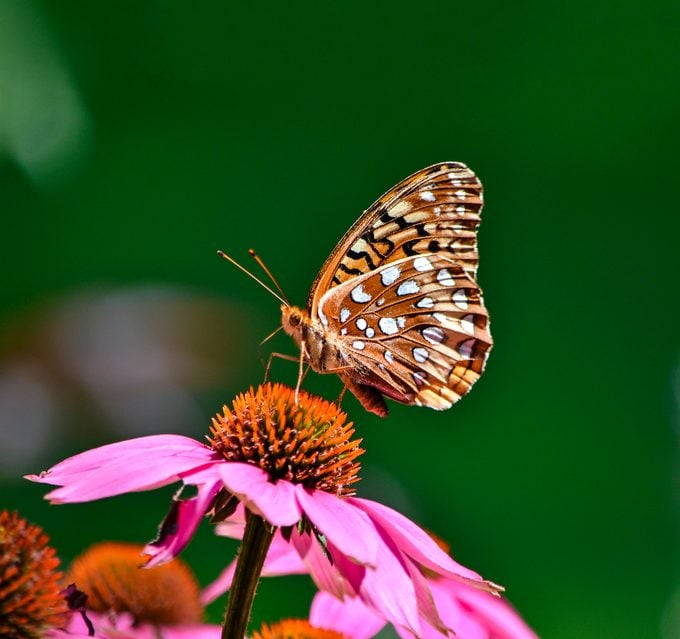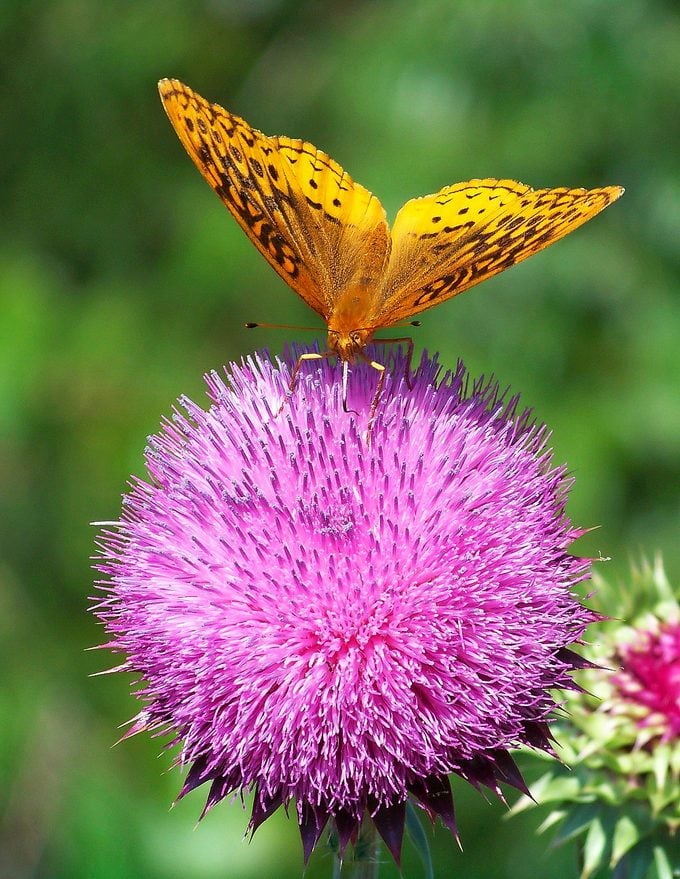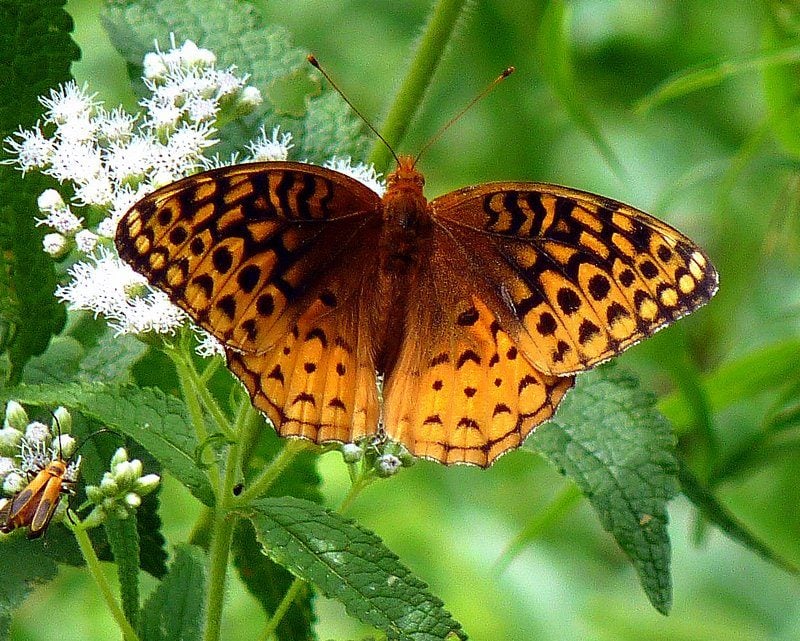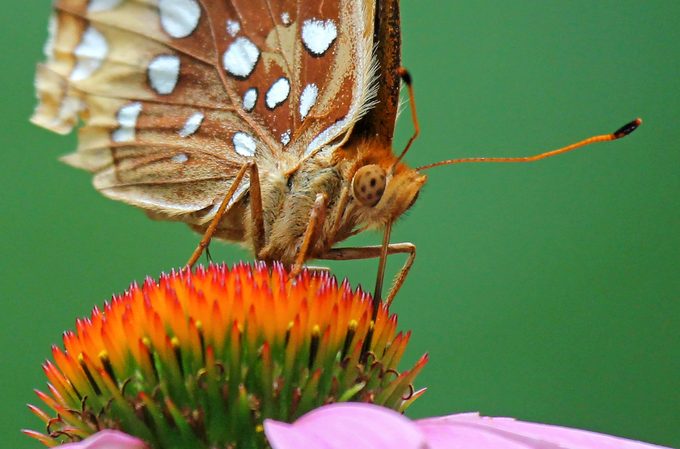Meet the Gorgeous Great Spangled Fritillary Butterfly
Updated: Mar. 29, 2023
Learn to identify a great spangled fritillary. Look for glints of silver on large orange wings to identify these butterflies that flit through gardens in summertime.
What Does a Great Spangled Fritillary Butterfly Look Like?

When most people see a flash of orange from a passing butterfly, they automatically assume it’s a monarch. There are plenty of other orange butterflies, though, many the same size and flying in the same range. Once you take a closer look, most of them don’t really resemble a monarch. One good example is the great spangled fritillary (Speyeria cybele), a gorgeous orange and brown butterfly that can be seen coast to coast across the northern half of the U.S. and into southern Canada.
Great spangled fritillaries resemble several other butterfly species in their range, including the Aphrodite fritillary (Speyeria aphrodite) and the Atlantis fritillary (Speyeria atlantis). If you’re interested in the specific details of telling them apart, try visiting the Massachusetts Butterfly Club for side-by-side comparison pages.
- Wingspan: 2 1/8 to 3 inches.
- Distinctive Markings: Orange with black patterned marks. Yellow band and silver spots on underside of hindwings
- Habitat: Open, moist-soiled meadows, woodlands, valleys and pastures
- Caterpillar: Black with orange-striped spines. Dormant in winter, feeds on violets in spring
- Host Plant: Violets
- Backyard Favorites: Adults sip nectar from common milkweed, Joe Pye weed, verbena and red clover. Females lay their eggs near violets, the only plants caterpillars eat
- Did You Know: Great spangled caterpillars hatch in the fall, overwinter in that stage and then finally take their first bites of food in spring
Get helpful tips to identify more butterflies in your yard.
When You Can Spot a Great Spangled Fritillary

These butterflies have only one generation each year, with adults emerging in early summer. They have a fairly long lifespan, too. Most butterflies are in flight for about a month at most, and many for much less. Great spangled fritillaries, on the other hand, will fly from mid-June to mid-September. They mate in midsummer, and females lay their eggs on or near native violet species.
The eggs hatch not long after they’re laid, but the minuscule caterpillars don’t start eating. Instead, they burrow down into the earth to find a safe hiding place and enter diapause (insect hibernation, basically) until spring. When the weather warms up, they emerge and begin feeding on the new foliage of the native violets. They eat for a few weeks, spend a few weeks in chrysalis, and then emerge around the time summer kicks in to start the process all over again.
Learn how to identify a viceroy butterfly.
How to Attract Great Spangled Fritillaries

Great spangled fritillaries will visit many nectar flowers during their flight time, so any butterfly gardener in their range stands a good chance of seeing them in their own garden. To up your odds, try planting some native violet species for them to lay their eggs on.

“One of my flower gardens is designed to attract hummingbirds and butterflies. Last year, great spangled fritillaries (above) were exceptionally numerous and visited purple coneflowers the most,” says Birds & Blooms reader Elisa Shaw of Red Hook, New York.
Next, discover 9 easy steps to attract butterflies to your yard.
